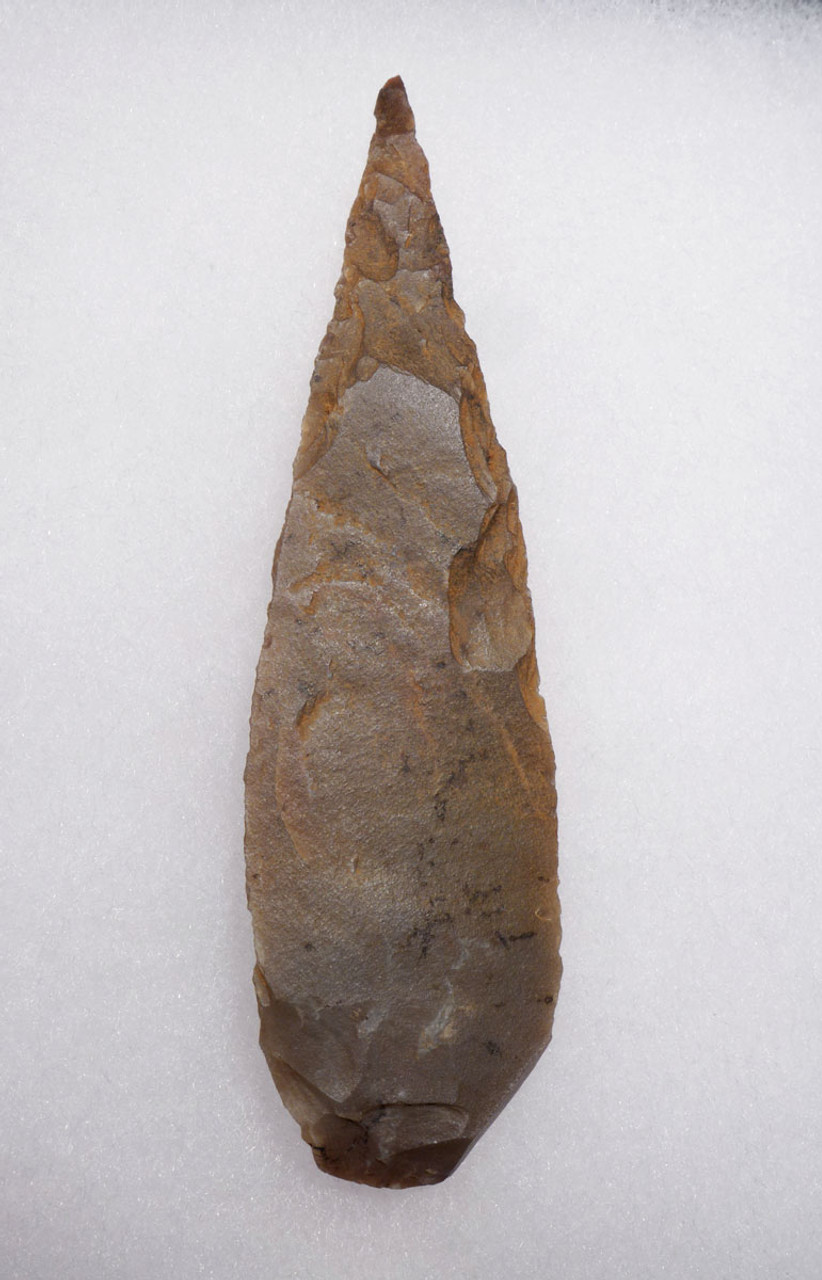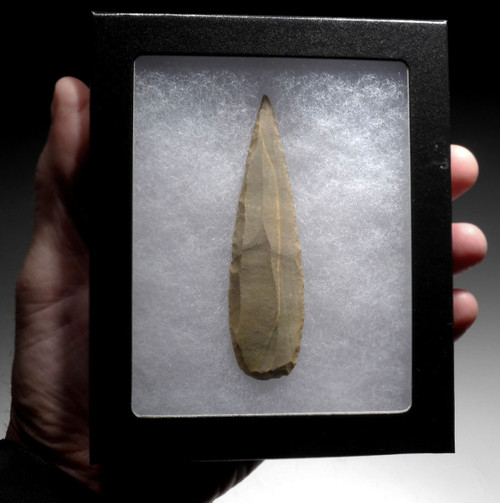Product Description
SEE MORE AFRICAN NEOLITHIC SPEARHEADS
We have been obsessively collecting the finest African Neolithic artifacts for over 20 years and this specimen comes from a small, select group we have been holding onto for the duration of that time. We have been to the source in the Sahara, scoured literal buckets and barrels of tens of thousands of arrowheads each year, for many years. Over the past decades, we have also purchased amazing private collections in America and Europe. In all this time, we would set aside the RAREST OF THE RAREST objects of African Neolithic cultures, and it is now time for us to sell some from this private, ultra-rare stash. The collection is small and limited, and once sold, would be impossible to recreate due to changed legislation and site depletion. Each specimen represents the highest grade of its kind that we have ever seen. This is one of those precious specimens from those efforts. The sites where these artifacts were once found, have been entirely picked clean for years, not to mention are now protected from any further exploration.
This is a Western Neolithic spearhead projectile point called a BIFACIAL ELONGATE LEAF spearhead. It was found on an exposed Neolithic site in the Sahel region. Made of gray and red wine chert, one side has been pressure-flaked on most of the flat side to yield a perfectly flattened surface yet, the opposing side shows a steep strengthening central rib which was created to the needle-sharp INTACT tip. The symmetry and workmanship on this spearhead is truly exquisite. The original mineral deposits and patina are intact and deep in the flake hinge fractures and micro-crevices - traits ONLY found in AUTHENTIC specimens.
HISTORY
The Neolithic in West Africa, when people increasingly produced their own food instead of hunting, fishing or collecting it as before, developed during a humid phase around 5000 BC. The invention of ceramics which was long thought to emerge in the earliest Neolithic, appeared at the central Malian site of Ounjougou dating to about 9,400 BC, and is believed to be an instance of the independent invention of pottery. The earliest Neolithic is attributed to the phase of self-production of food, although no plants were cultivated and no cattle were kept.
The middle Neolithic is marked by first traces of nomadic cattle breeders (again) around 4000 BC. Around 3500 BC, the relatively humid climate came to an end. A thousand years later, the dry phase, which apparently drove cattle nomads from the east to Mali, reached its peak. The northern lakes dried up and the population mostly moved south.
The late Neolithic was marked by renewed immigration from the Sahara around 2500 BC which had grown into an enormously spacious desert.
Approximated to the Neolithic, there were Negroid skeletal remains found in West Africa. At El Guettara, Mali, there were two individuals found. At Karkarichinkat South, Mali, a skull was found. At Ibalaghen, Mali, there was a cranium found. At Tin Lalou, Mali, there was a cranium and mandible found. At Tamaya Mellet, Niger, there were 12 individuals found. All of these remains have been specifically dated between 5000 BC and 2000 BC.
 US DOLLAR
US DOLLAR
 EURO
EURO
 AUSTRALIAN DOLLAR
AUSTRALIAN DOLLAR
 CANADIAN DOLLAR
CANADIAN DOLLAR
 POUND STERLING
POUND STERLING
























